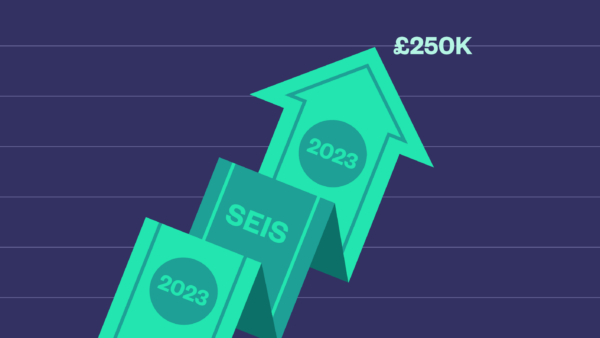SEIS: Guide to the Seed Enterprise Investment Scheme
Founders guide to SEIS. Find out how it helps startups and investors, eligibility criteria, how to get Advance Assurance...


Great news for fundraising startups! These changes to the Seed Enterprise Investment Scheme (SEIS) went live on 6 April 2023:
These updates to SEIS were approved in July 2023.
In the post, we explain the changes and how to use SEIS plus EIS when you’re fundraising.
In this webinar recording, our CEO Anthony Rose explains how the updates to SEIS could affect your fundraising and how to make the most of the increased limits.
Back in 2022 the government announced increases to the SEIS limits – fabulous news for UK startups and angel investors. SeedLegals was the first to explain those changes back in September 2022, showing how you could use SeedFASTs with six-month longstop dates to raise £250K SEIS starting back then.
The SEIS changes came into effect on 6 April 2023, went live on the HMRC website in early July and were approved July 2023.
Anthony RoseWhen you do your Advance Assurance application, you have to give HMRC details of intended investment for a substantial fraction of the amount of SEIS/EIS Advance Assurance that you’re applying for.
For example, if you’re applying for £300K in SEIS+EIS, you would need to give details of potential investors for at least, say, £100K. Without that, HMRC might reject your application as speculative, and you’ll have to try again later when you’ve found some potential investors.
This means that the total amount of Advance Assurance you can apply for will be limited by the amount of investment you’re able to get intention for before you apply for Advance Assurance.
When you apply for Advance Assurance on SeedLegals, we explain all this in detail.
CEO and Co-Founder,
Ready to make the most of the new SEIS limits? Book a free call with one of our funding strategists – bring your questions to get answers fast.
Sources
Gov.uk | Policy paper | Increasing the limits of the Seed Enterprise Investment Scheme | Accessed 6 April 2023
EISA | Extensions to the SEIS – important information | Accessed 6 April 2023
Gov.uk | Guidance | Apply to use the Seed Enterprise Investment Scheme to raise money for your company | Accessed 10 July 2023





